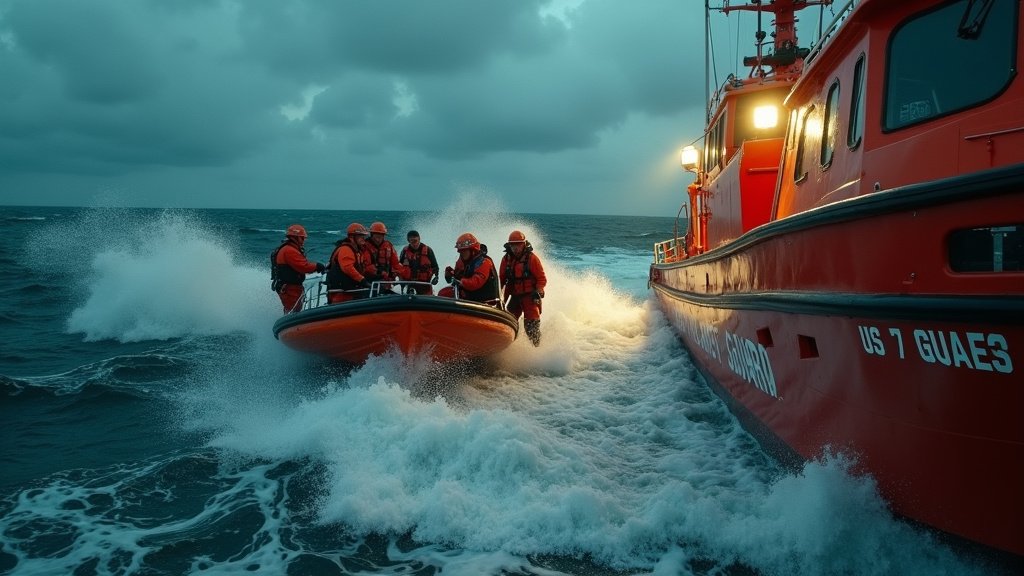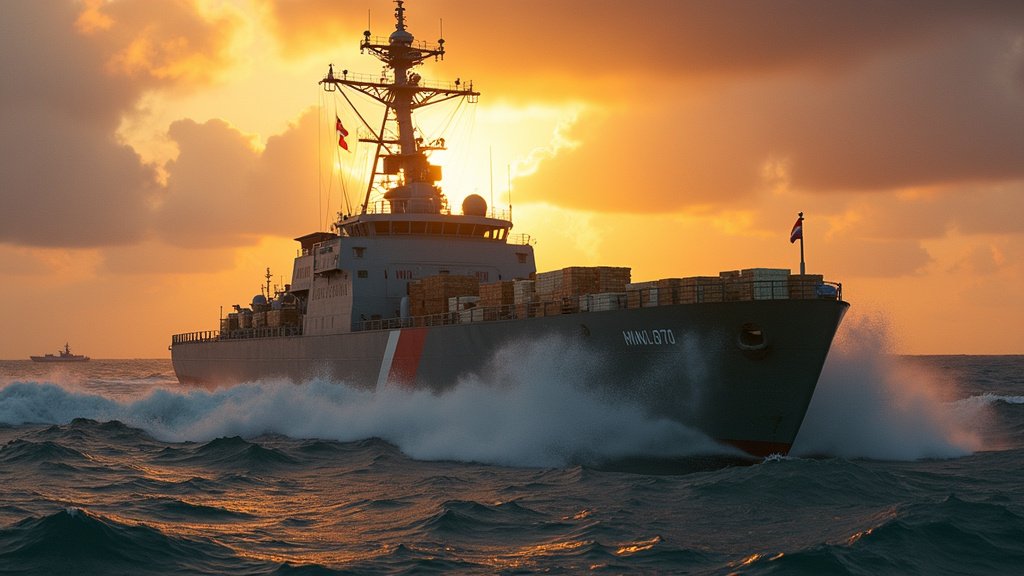A routine Saturday outing on the water off the coast of Miami turned into a dramatic rescue operation on August 24, 2025. Eight individuals found themselves in peril when their 20-foot vessel, critically low on fuel, began taking on water amidst increasingly rough seas approximately ten miles offshore. The distressing call for assistance, made in rapidly deteriorating conditions, triggered an immediate response from maritime rescue services. This incident serves as a potent and current reminder for all recreational boaters in the popular South Florida region about the unforgiving nature of the ocean and the paramount importance of thorough preparation and adherence to safety protocols.
The Rescue Operation
The alarm was raised shortly after 1:40 p.m. ET when the boaters contacted authorities, reporting their dire situation. Responding to the distress call, the U.S. Coast Guard (USCG) coordinated with the Miami-Dade Fire Rescue (MDFR) Department. MDFR’s specialized Fireboat 21 was dispatched and swiftly located the distressed 20-foot craft, identified as being in rough seas near the intersection of 76th Street and Collins Avenue. The boat was observed to be taking on significant amounts of water, a clear indication of imminent danger. First responders from MDFR boarded the vessel to safely transfer all eight occupants. The passengers were then brought aboard Fireboat 21 and transported back to shore. Fortunately, all individuals were reported to be unharmed by the ordeal, a testament to the efficient and rapid response of the joint rescue teams. Such coordinated efforts are a hallmark of maritime safety operations in the busy Miami maritime environment.
Circumstances Leading to Distress
The perilous situation arose from a confluence of critical factors: critically low fuel reserves and severe weather conditions. Running out of fuel at sea, especially when coupled with rough seas, significantly elevates the risk to boaters. In such scenarios, a vessel’s ability to maneuver or maintain stability is compromised, turning a potential inconvenience into a life-threatening emergency. The “rough Miami waters” described are a frequent reality in this region, where sudden weather shifts are common. According to marine forecasts and advisories, sea states can rapidly transition, with wave heights commonly reaching 5 to 8 feet near the shore and potentially exceeding 9 to 11 feet further offshore. For a 20-foot vessel, such conditions are particularly challenging, increasing the likelihood of water ingress and making navigation difficult. The boat’s intake of water likely exacerbated its low-fuel situation, contributing to a loss of buoyancy and control.
Miami’s Waters: A Popular Playground with Perilous Undertones
Miami’s reputation as the “Boating Capital of the World” is well-earned, drawing countless enthusiasts with its spectacular coastline, pleasant climate, and extensive network of navigable waterways. However, this vibrant maritime culture is shadowed by a stark reality: Florida consistently leads the nation in reported boating accidents, fatalities, and injuries. In 2022, the state recorded over 735 boating accidents, leading to 65 deaths and 457 injuries. Miami-Dade County itself mirrors this trend, experiencing a significant number of incidents, highlighting the inherent risks associated with recreational boating in the area. Investigations into these occurrences frequently cite common contributing factors such as operator inattention—often due to distractions like mobile phones or passengers—operator inexperience, boating under the influence (BUI), excessive speed, reckless operation, and inadequate vessel maintenance. Adverse weather, including sudden storms and rough seas, remains a primary catalyst, capable of transforming a leisurely excursion into a critical emergency situation.
Safety First: Lessons from the Seas
The recent rescue of eight individuals underscores the fundamental importance of rigorous safety practices for all mariners. Authorities like the U.S. Coast Guard and Miami-Dade Fire Rescue repeatedly stress several critical preparedness measures. Perhaps the most vital is the proactive monitoring of weather forecasts and sea conditions. Boaters must check these advisories not only before departing but also remain aware of changing conditions while at sea. Adherence to Small Craft Advisories, gale warnings, or special marine warnings is non-negotiable, especially for smaller craft susceptible to adverse weather. Establishing a “float plan”—a detailed outline of the trip, including vessel description, route, intended destination, and expected return time—and sharing it with a reliable person on shore is a crucial step that can expedite rescue efforts if a situation turns dire. Regular and thorough vessel maintenance, including ensuring the propulsion system is robust and the fuel tanks are adequately filled for the journey with a safety margin, is equally essential to prevent mechanical failures or fuel shortages. Furthermore, ensuring all necessary safety equipment is present, functional, and accessible is critical. This includes reliable navigation systems, proper-fitting life jackets for every person aboard (and worn consistently), and a fully operational VHF marine radio, typically tuned to Channel 16 for distress calls and immediate communication with rescue services. These practices are not merely recommendations but vital components of responsible seamanship, making this incident relevant trending news for the boating community.
Conclusion
The successful extrication of eight individuals from a sinking vessel in challenging Miami waters showcases the critical capabilities of our maritime rescue services and the unpredictable forces of nature. While Miami’s aquatic playground offers unparalleled recreational opportunities, it demands a profound respect for its inherent dangers. By diligently adhering to safety guidelines, prioritizing vessel maintenance, staying acutely aware of weather patterns, and ensuring essential safety equipment is on board and in use, boaters can significantly enhance their safety and that of their passengers. This event, now a prominent piece of local news, serves as a powerful reinforcement of the principle that safety on the water is paramount, transforming potential tragedy into a successful rescue.





